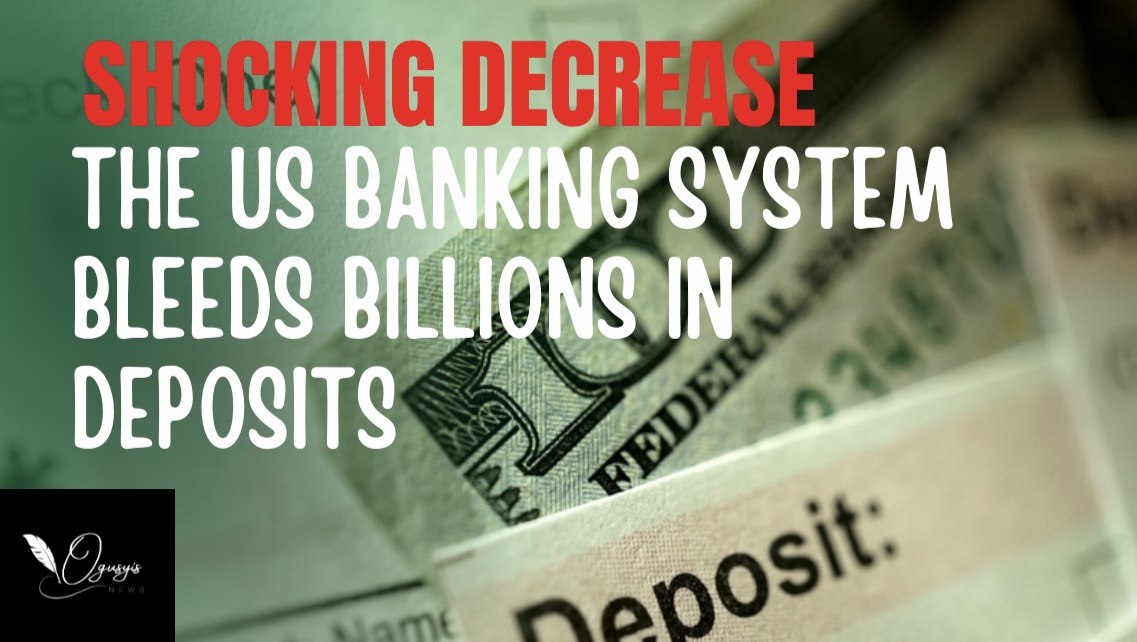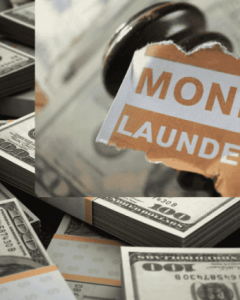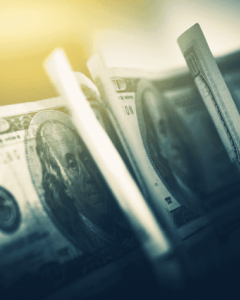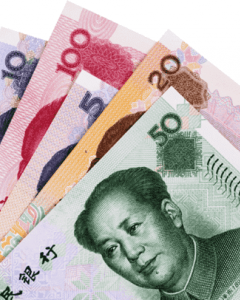Shocking Decrease: The US Banking System Bleeds Billions in Deposits
According to statistics from the Federal Reserve (Fed), the US banking system has witnessed a significant decrease in deposits since the beginning of January.
According to statistics from the Federal Reserve (Fed), the US banking system has witnessed a significant decrease in deposits since the beginning of January. A staggering 371 billion USD has exited the system during this period. Conversely, money market funds have experienced a substantial influx of more than 769 billion USD. These figures highlight a growing trend of investors seeking alternative avenues to park their funds.

This week, money market funds have reached an all-time high in terms of assets flowing into them. The allure of attractive interest rates above 5% acts as a magnet for investors, especially given the Fed's determination to keep interest rates at elevated levels for an extended period. Such a scenario presents a challenge for banks that are already struggling to retain depositors, especially after witnessing the collapse of three mid-sized banks earlier this year.
The decline in deposits and the increase in money market funds have been a continuous trend since the start of the year. Although the outflow from the banking system slowed over the summer, major banks have still experienced a decline in deposits since the end of June. The wealthiest customers pose the biggest risk, as wealthy clients and corporate clients' deposits have witnessed a nearly 13% decline in the first seven months of this year, in comparison to the overall decline of just 1.8%.
In addition to the challenge of retaining wealthy customers, banks are also grappling with high interest rates, rapidly increasing borrowing costs, and eroding profits. Recent weeks have seen credit rating agencies such as Moody's and S&P Global lowering the credit ratings of several mid-sized banks. Larger banks face pressure from regulators to increase capital and, in some cases, issue longer-term bonds as backup. Moreover, the rising credit card debt and a surge in bad debt ratios could lead to substantial losses in the near future.
The banking industry has already felt the impact of these challenges, with banking stocks experiencing their worst month since March. The KBW Nasdaq Bank index fell by 8% and the KBW Nasdaq Regional Bank index, which includes regional banks, fell by 9% at the end of August. The pressure on banks can be traced back to 2022 when the Fed implemented measures to cool inflation by pushing interest rates to skyrocket. This resulted in a plummet in the value of bonds held by banks and forced financial institutions to raise interest rates to attract and retain depositors, consequently eroding their profits and increasing liquidity risks.
Silicon Valley Bank, Signature Bank, and First Republic are some notable examples of banks that collapsed as depositors rushed to withdraw their money. In a recent report, S&P commented on this trend, stating, "Many depositors have switched to high-interest accounts, significantly increasing banks' mobilization costs. Falling deposits threaten the liquidity, as well as the stock and bond prices of many banks."
Deposits at banks insured by the Federal Deposit Insurance Corporation (FDIC) saw a decline of 2.5% in the first quarter, marking the sharpest quarterly decline since 1984. Banks not insured by the FDIC experienced an even sharper decline of 8.2% during the same period. Initially, major banks benefited from the crisis at regional banks as depositors sought safer havens. However, the tide quickly turned, and customers gravitated towards smaller banks offering higher interest rates or money market funds.
The asset management segments of major banks like JPMorgan Chase, Wells Fargo, Bank of America, and Citi witnessed significant withdrawals in the second quarter. JPMorgan and Wells Fargo experienced an 11% decrease, far higher than in previous periods. To counter this trend, in mid-August, these major banks issued short-term certificates of deposit with higher interest rates. For instance, JPMorgan Chase's 6-month certificate of deposit offers an interest rate of up to 5% per year. This places immense pressure on smaller banks that lack the resources to launch similar competitive policies.
In conclusion, the US banking system is facing a challenging time as deposits continue to decline, while money market funds attract substantial inflows. High interest rates, increasing borrowing costs, eroding profits, and credit rating downgrades contribute to the mounting pressures on banks. The aftermath of the recent economic crisis has undoubtedly reshaped the landscape of the banking industry.
Shocking Decrease: The US Banking System Bleeds Billions in Deposits
Breaking: Ten Arrested in Singapore for Multi-Billion Dollar Money Laundering Case
In a significant development, ten individuals have been arrested in Singapore for their involvement in a multi-billion dollar money laundering case. Stay updated with the latest news and investigations on this high-profile case.
In a significant development, ten individuals have been arrested in Singapore for their involvement in a multi-billion dollar money laundering case. Stay updated with the latest news and investigations on this high-profile case.
Read moreEuropean Shares Surge as Eurozone Inflation Drops: Will ECB Halt Interest Rate Hikes?
European shares surge as eurozone inflation drops, raising hopes of ECB halting interest rate hikes. Despite a poor performance, softer inflation data leads to gains in real estate and technology shares.
European shares surge as eurozone inflation drops, raising hopes of ECB halting interest rate hikes. Despite a poor performance, softer inflation data leads to gains in real estate and technology shares.
Read moreUK Regulators Shake Up Financial Sector with Stricter Diversity Standards
The Financial Conduct Authority (FCA) and the Prudential Regulation Authority (PRA) in the UK are proposing stricter diversity standards to address workplace bullying and sexual harassment in the financial sector. Learn more about the measures aimed at creating a safer and inclusive environment within organizations.
The Financial Conduct Authority (FCA) and the Prudential Regulation Authority (PRA) in the UK are proposing stricter diversity standards to address workplace bullying and sexual harassment in the financial sector. Learn more about the measures aimed at creating a safer and inclusive environment within organizations.
Read moreSweden's Bankruptcy Rates Skyrocket by 14%, Raising Concerns for Labor Market
Concerns for the labor market in Sweden as bankruptcy rates skyrocket by 14%. Recent data from UC highlights the downturn in sectors such as construction, hospitality, and restaurants.
Concerns for the labor market in Sweden as bankruptcy rates skyrocket by 14%. Recent data from UC highlights the downturn in sectors such as construction, hospitality, and restaurants.
Read moreUSD Resurgence: Dominating Global Financial Landscape
Explore the remarkable resurgence of the USD in the global financial landscape, its impact on other currencies, and implications for businesses and individuals in international trade and investment.
Explore the remarkable resurgence of the USD in the global financial landscape, its impact on other currencies, and implications for businesses and individuals in international trade and investment.
Read moreChina's Economic Challenges: Preventing a Vicious Cycle with the Yuan
Explore the economic challenges faced by China, including the sacrifice of the Yuan to prevent a vicious cycle of low demand and declining output. Learn why experts believe immediate action is crucial.
Explore the economic challenges faced by China, including the sacrifice of the Yuan to prevent a vicious cycle of low demand and declining output. Learn why experts believe immediate action is crucial.
Read moreUSD Near Longest Bull Streak in 9 Years as Optimistic Economic Data Supports
Discover why the USD is on the verge of its longest rising streak since 2014, driven by encouraging US economic data. Although this trend raises doubts about future interest rate hikes by the US Federal Reserve, the Yuan is facing pressures with falling values domestically and internationally due to increasing capital flow concerns and a widening bond yield gap with developed economies. Stay informed on these developments impacting global currency markets.
Discover why the USD is on the verge of its longest rising streak since 2014, driven by encouraging US economic data. Although this trend raises doubts about future interest rate hikes by the US Federal Reserve, the Yuan is facing pressures with falling values domestically and internationally due to increasing capital flow concerns and a widening bond yield gap with developed economies. Stay informed on these developments impacting global currency markets.
Read moreWeakness of Yen Reflects Interest Rate Difference, Poses Valuation Challenges
Explore the factors behind the weakness of the yen and its impact on global economies. The valuation challenges arise from the interest rate difference between Japan and other markets. Gain insights into the concerns of investors and policymakers surrounding this devaluation trend.
Explore the factors behind the weakness of the yen and its impact on global economies. The valuation challenges arise from the interest rate difference between Japan and other markets. Gain insights into the concerns of investors and policymakers surrounding this devaluation trend.
Read moreChina's PBoC Takes Action as Yuan Reaches 16-Year Low
As the yuan hits its lowest level in 16 years, the People's Bank of China (PBoC) is implementing measures to counteract the ongoing decline. Explore the PBoC's efforts to address the currency's depreciation, which is comparable to levels seen during the 2007-2008 global financial crisis. Stay updated on China's attempts to stabilize its currency amidst challenging economic circumstances.
As the yuan hits its lowest level in 16 years, the People\'s Bank of China (PBoC) is implementing measures to counteract the ongoing decline. Explore the PBoC\'s efforts to address the currency\'s depreciation, which is comparable to levels seen during the 2007-2008 global financial crisis. Stay updated on China\'s attempts to stabilize its currency amidst challenging economic circumstances.
Read more













